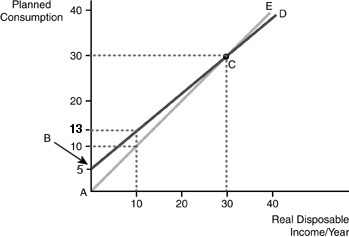Transaction costs are
A) all unnecessary and wasteful costs.
B) any nonmonetary costs associated with a transaction.
C) not real costs because they make no positive contribution to economic transactions.
D) the costs of arranging agreements between demanders and suppliers.
E) the opposite of opportunity costs.
D
You might also like to view...
In a small town of 100 people, there are 10 children under 16, 10 retired people, 60 people with full-time jobs, 3 people with part-time jobs, 3 full-time students over 16, and 4 full-time homemakers. The remaining people did not have jobs, but wanted them. What is the participation rate in this town?
A. 87.5% B. 72.0% C. 81.1% D. 63.0%
Because resources are limited
A) people must make choices. B) firms will be forced out of business. C) only the very wealthy can get everything they want. D) the availability of goods will be limited but the availability of services will not.
According to the equation of exchange, if real output and the money supply stay the same and the price level increases:
A. nominal GDP remains constant. B. the velocity of money has to increase. C. the velocity of money has to decrease. D. the real GDP had to rise.
 Refer to the above figure. At an income of $10,000, saving is
Refer to the above figure. At an income of $10,000, saving is
A. $3,000. B. $13,000. C. -$3,000. D. 0.